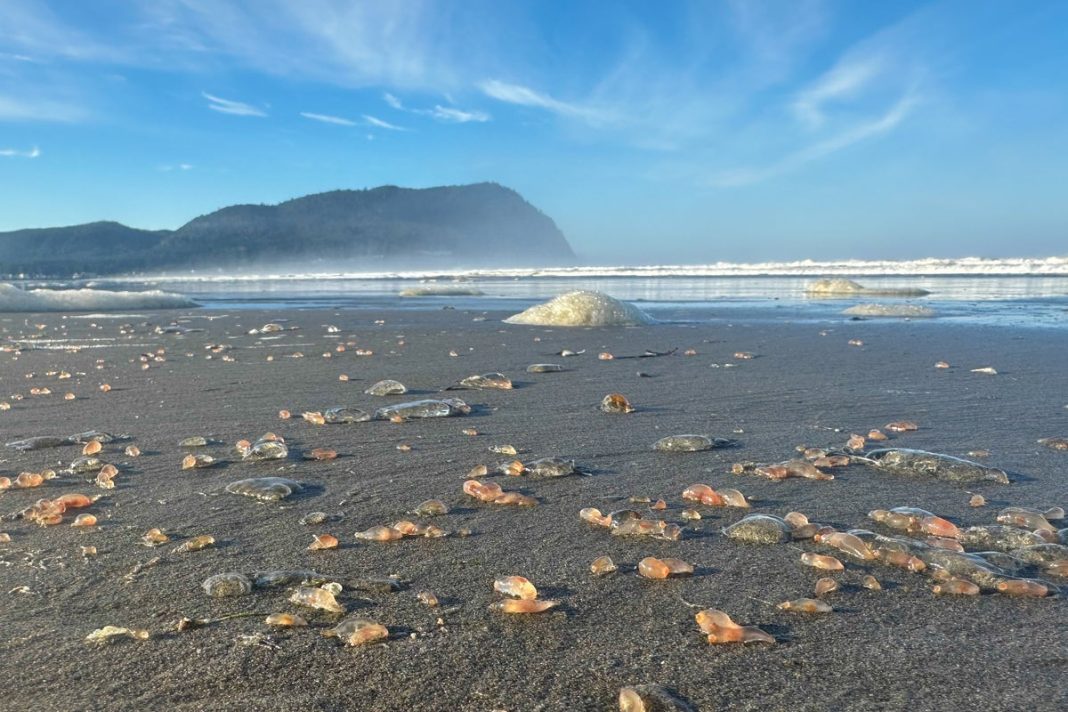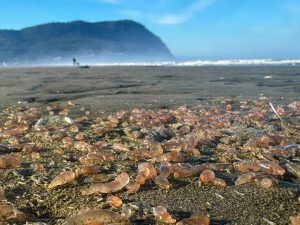Key Takeaways
- Thousands of pink ‘skin breathing’ sea cucumbers washed up on Oregon’s Seaside Beach
- The rare event was caused by heavy surf and unusually low tides
- The creatures cannot return to sea and will die, providing food for beach invertebrates
Thousands of gelatinous pink sea creatures have blanketed a significant stretch of Oregon’s Seaside Beach in a rare natural phenomenon. The ‘skin breathing’ sea cucumbers were found scattered across more than 3.2 kilometers of shoreline following powerful surf and exceptionally low tides.
Tiffany Boothe, assistant manager of the Seaside Aquarium, confirmed the extensive wash-up and described the scene.
“They are literally littering the tideline,” Boothe said.
About the Sea Creatures
These partially translucent sea cucumbers typically live buried in sand along the low tideline and further out at sea. Measuring about half-inch long, they can grow up to 6 inches in length. The scientific name for these particular cucumbers is Leptosynapta clarki, and they inhabit coastal waters from northern California to the Gulf of Alaska.
What Causes These Wash-Ups?
According to experts, this phenomenon occurs when specific surf and tide conditions align, which can happen a few times annually or once every few years. While small numbers sometimes appear scattered along the shore, this recent event featured unusually large groupings of the creatures.
Fate of the Washed-Up Sea Cucumbers
The sea cucumbers cannot return to their natural habitat independently and will dry up and perish on the beach. They will serve as nutrients for beach hoppers, beach fleas, and other invertebrates that inhabit the tideline. Notably, birds do not consume these creatures.
Boothe estimates that any remaining specimens will likely dry up quickly, blend with the sand, and disappear by Wednesday or Thursday. Seaside, located approximately 80 miles northwest of Portland, Oregon, continues to witness this unusual natural event.





